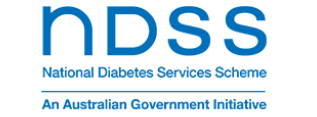Diabetes management plan – a guide for principals
A student’s diabetes management plan is an essential document that guides how schools can support students with type 1 diabetes to learn and participate fully at school.
The plan is usually developed by the student’s clinical treating team in collaboration with the student and their parents or carers. The plan will outline a student’s monitoring, insulin and daily type 1 diabetes management needs while at school. The plan should provide schools with clear information about when a student requires supervision or support with key tasks, such as checking glucose levels or taking their insulin at school.
The diabetes management plan will also include an action or emergency plan with clear, concise information for situations where prompt action is required.
Training available through the Diabetes in Schools Program is designed to assist school staff to understand and implement a student’s diabetes management plan.
Development and implementation of diabetes management plans

The diabetes management plan is integral to supporting students with type 1 diabetes at school. It is also an important aspect of ensuring schools are able to meet the needs of students with type 1 diabetes.
When a student has been diagnosed with type 1 diabetes and a diabetes management plan has been developed, or where a student already diagnosed with type 1 diabetes is transitioning to a new school, the school should communicate with the student and their parents or carers along with the clinical treating team to ensure that the diabetes management plan is effectively implemented in the school environment. This will ensure that the student receives the support they require to effectively manage their type 1 diabetes.
There are several steps that a principal may take to identify that they have a student with type 1 diabetes at school and to implement the student’s diabetes management plan. This may include:
- ensuring that the school has a process to identify the enrolment or transfer of new students with type 1 diabetes at the school
- ensuring that inquiries are made to obtain the student’s diabetes management plan, which will be completed by the student’s clinical treating team. This should be requested from the student’s parents or carers, who should be made aware that the school is not able to adequately support the student without the diabetes management plan and any updates to that plan
- ensuring that the student’s diabetes management plan is implemented in the school environment and that the adjustments needed to implement it are documented – this should occur in consultation with the student’s parents or carers, noting that as outlined above, the school has met its obligations to make reasonable adjustments to accommodate the student’s needs
- ensuring that the student is provided with the support necessary to implement the details outlined in the diabetes management plan as agreed during consultation with the student’s family and the student (where relevant)
- ensuring that for existing students who are newly diagnosed with type 1 diabetes, the student is able to return to school at the earliest opportunity. This requires that the principal makes inquiries to obtain the student’s diabetes management plan, documents and implements the plan in consultation with the student’s family, and ensures that the necessary education and training for designated staff is undertaken at this time
- acknowledging that it is unreasonable for schools, principals or school staff to expect that parents or carers attend the school (and forego employment) to facilitate the school’s transition to supporting the student, or to expect this on an ongoing basis to support the student at the school
- ensuring that the student’s diabetes management plan is regularly reviewed by designated staff to ensure it is current and that inquiries are made with the student’s parents or carers at regular intervals to check whether an updated plan has been developed – and ensuring that any updates are implemented effectively based on the process above
- ensuring that any necessary emergency measures and a diabetes emergency action plan is in place, the details of which should be communicated to all staff so that they aware of the action to take should a type 1 diabetes emergency occur.
Ensure that consent is documented in the diabetes management plan
An important part of implementing the diabetes management plan is to ensure that sufficient consent is obtained to render the school’s actions lawful in terms of providing support to the student. This can be achieved by:
- obtaining consent from the student’s parents or carers that allows school staff to provide physical support and assistance to manage a student’s type 1 diabetes and administer insulin
- documenting the consent from the student’s legal parents or carers in the diabetes management plan and retaining a copy for the school’s records
- ensuring that the consent is specific to what was agreed between the parents or carers and the principal, and details how the student’s type 1 diabetes will be managed in the school environment and by whom – and that this is updated should there be a change in the school staff who support the student
- ensuring that the consent of the parents or carers authorises disclosure of private and confidential information concerning the student’s type 1 diabetes and health needs to other parties including school staff, external agencies (such as the education department or the child’s clinical treating team), and other relevant third parties (such as those providing type 1 diabetes education and training to school staff), so far as is reasonable and required for the effective implementation of the diabetes management plan in the school setting.
Individualised diabetes management plans
A student’s diabetes management plan should contain details how to manage the individual student’s type 1 diabetes while in the school environment, including what to do in extraordinary circumstances.
Below is a list of what the student’s diabetes management plan should include.
- An action or emergency plan
- The student’s glucose monitoring requirements (blood glucose and continuous glucose monitoring (CGM)) at school – both routine and additional monitoring. This includes the times and location of routine glucose checking and the level of support, supervision or assistance required
- The student’s target range for glucose levels
- The symptoms and management of low and high glucose levels
- The need for blood ketone checking if the student is unwell or glucose levels are high, and subsequent action if required
- The student’s insulin administration requirements at school – including time(s) and location of routine insulin administration, their dose determination method, their insulin delivery device and the level of support, supervision or assistance required
- The management of physical activity
- The contact details of parents/carers and the student’s clinical treating team
- What to do in the event of a lock-down/evacuation
About the diabetes management plan
Diabetes management plans will differ in format and detail depending on the state or territory.
In some states, schools are also required to develop a separate school health plan. These plans do not replace the students diabetes management plan but provide more detail about what actions and adjustments a school will put in place to support a student with type 1 diabetes.
Below are links to plans typically used in different states. Families should take guidance from their clinical teams about which diabetes management plan will be prepared for their child.



